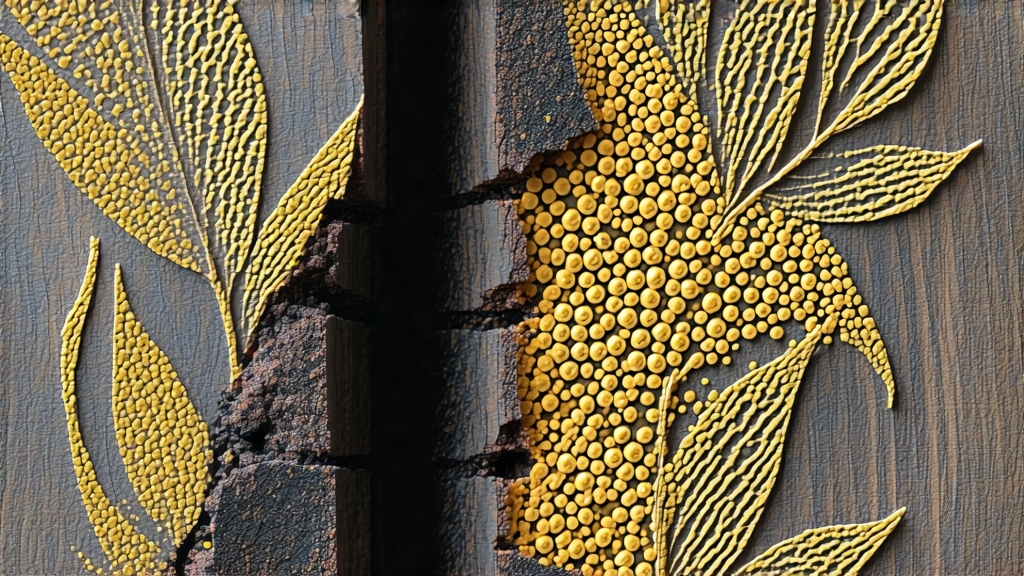
Few beverages carry the quiet mystique of Fu brick tea, a subterranean marvel within China’s vast dark-tea family. While Pu-erh hoards the limelight, Fu zhuan cha—literally “Fu brick tea”—has spent four centuries journeying from the tiny Shaanxi county of Jingyang to the yak-butter churns of Tibet, the bazaars of Kashgar, and, today, the specialty shelves of Berlin and Brooklyn. To understand Fu brick is to taste the Silk Road itself: a compacted rectangle of leaf, time, and microscopic gold.
History: From Imperial Decree to Caravan Currency
In 1368 the new Ming court, desperate to reduce the cost of transporting leaf to the horse-trading frontiers, ordered tea to be steamed, compressed, and packed into sturdy bricks that could survive the 3,000-km trek westward. Jingyang, perched at the climatic junction of the Qinling Mountains and the Wei River, became the authorized mint. By the Qing era, “Jingyang Fu bricks” had become legal tender; one brick bought one horse, and a caravan mule could shoulder 240 bricks without a single leaf cracking. Tibetan chronicles record that monks traded bricks for salt, mothers used shavings to quiet colicky infants, and bandits valued them above silver. The bricks crossed the Himalaya, fermented gently under yak-hair tents, and acquired a mellow, fungal sweetness that would later be identified as the signature of Eurotium cristatum, the “golden flower.”
Terroir: Where the River Bends and the Mold Blooms
Authentic Fu brick begins with late-picked leaves from the southern flank of the Qinling range, 800–1,200 m above sea level. The bushes, mostly seed-propagated descendants of Tang-dynasty gardens, endure humid summers and fog-laden nights that encourage thick, waxy leaves rich in polysaccharides. After harvest, the leaf is trucked to Jingyang, whose groundwater carries an unusually high ratio of potassium to calcium—mineral chemistry that local elders insist “teaches the golden flower how to dance.” No other county has ever replicated the bloom density or the apricot-saffron aroma that Jingyang achieves in only six days.
Craft: The Secret Life of 28 Nights
Fu brick production is a choreography of moisture, pressure, and spores. First, the raw maocha is re-blown with 90 °C steam for exactly 38 seconds; this softens cellulose without killing the indigenous microbes. While still pliant, the leaf is piled 70 cm deep inside bamboo-lined chambers and sprayed with Jingyang well water until moisture hits 28 %. For the next 18 hours the pile is turned every 40 minutes, oxygenating the core and encouraging thermophilic bacteria to raise internal temperature to 55 °C—hot enough to pasteurize competitors but gentle enough to court Eurotium.
The half-fermented leaf is then weighed into 2 kg molds and hydraulic-pressed at 0.79 MPa, a pressure calibrated to leave micro-cavities through which humid air can still circulate. Bricks are stacked like ingots in an underground kiln kept at 26 °C and 78 % relative humidity. Between nights 4 and 10 the magic happens: filamentous golden spores germinate, forming visible ochre flecks that gradually weave into a velvet galaxy across the broken leaf. By day 28 the bloom density must exceed 500,000 colonies per gram brick—any fewer, and the factory will reject the batch as “white-heart,” suitable only for domestic instant-beverage plants. Finally, bricks are slow-dried at 37 °C for another 15 days, locking in the hay-like sweetness and reducing moisture to 9 %, low enough to travel from Xi’an to Lhasa without blooming mold in transit.
Variations: The Family Portrait
Within the Fu brick lineage three styles dominate today. Classic Jingyang remains pressed to the traditional 2 kg, 14 × 9 × 3 cm brick, wrapped in hand-woven reed leaves and stamped with the reign-year mark. A 1 kg “monk’s brick” (seng zhuan) appeared in the 1980s, designed to fit the narrow stone staircases of Tibetan monasteries; it ferments faster and carries a lighter, orchid-like note. Since 2005